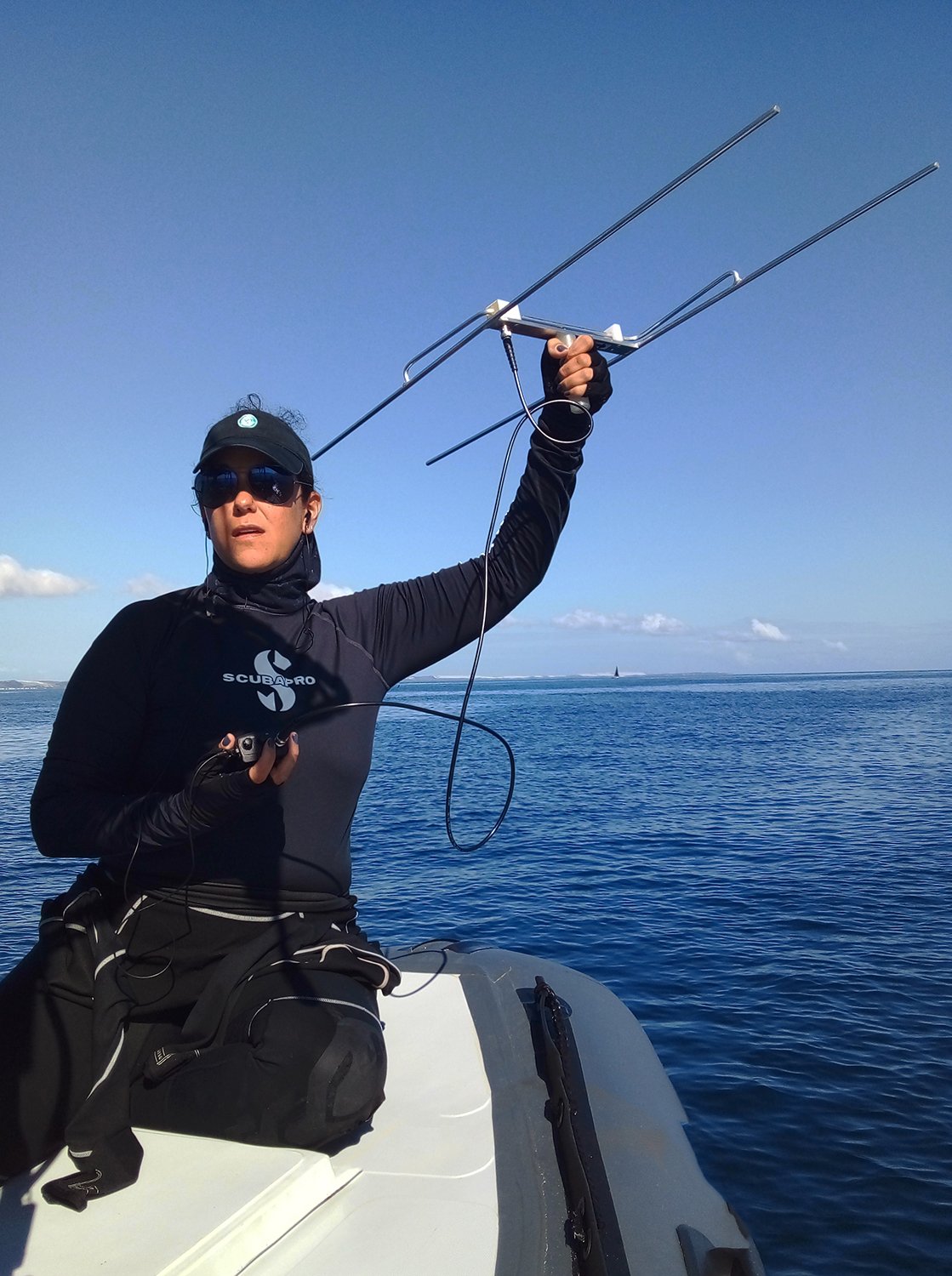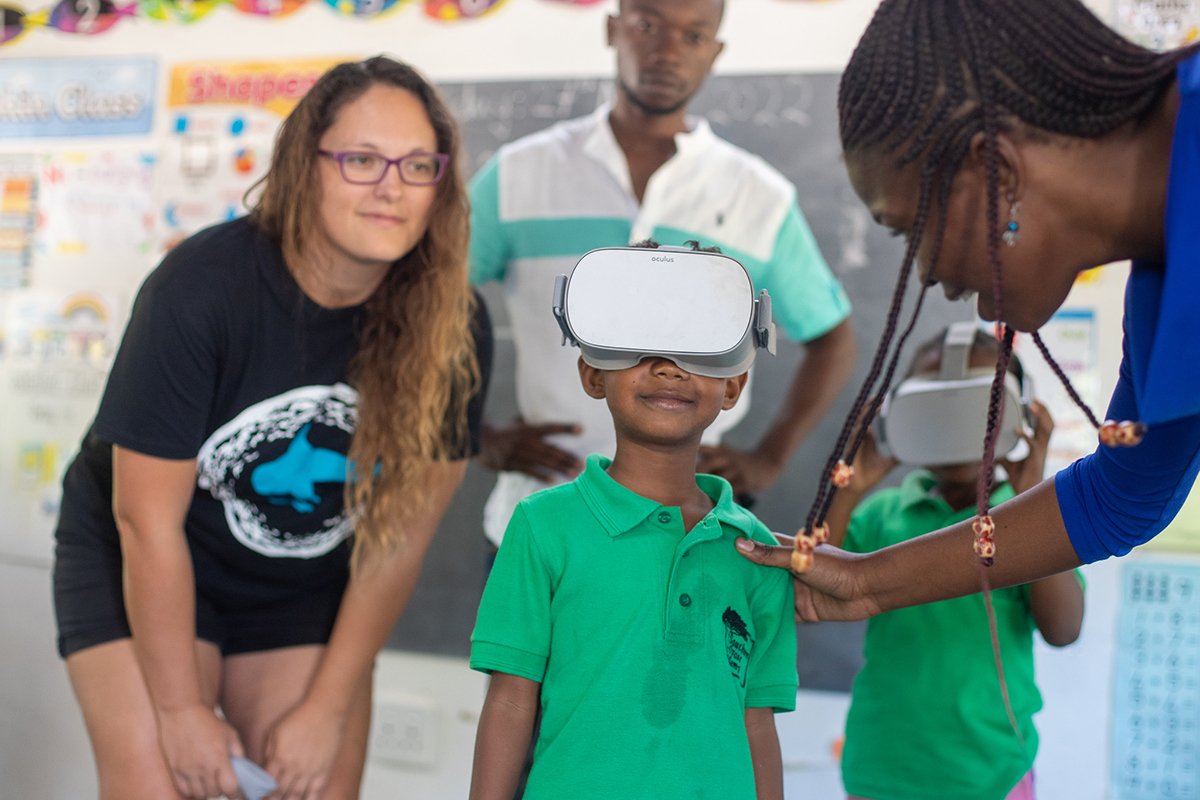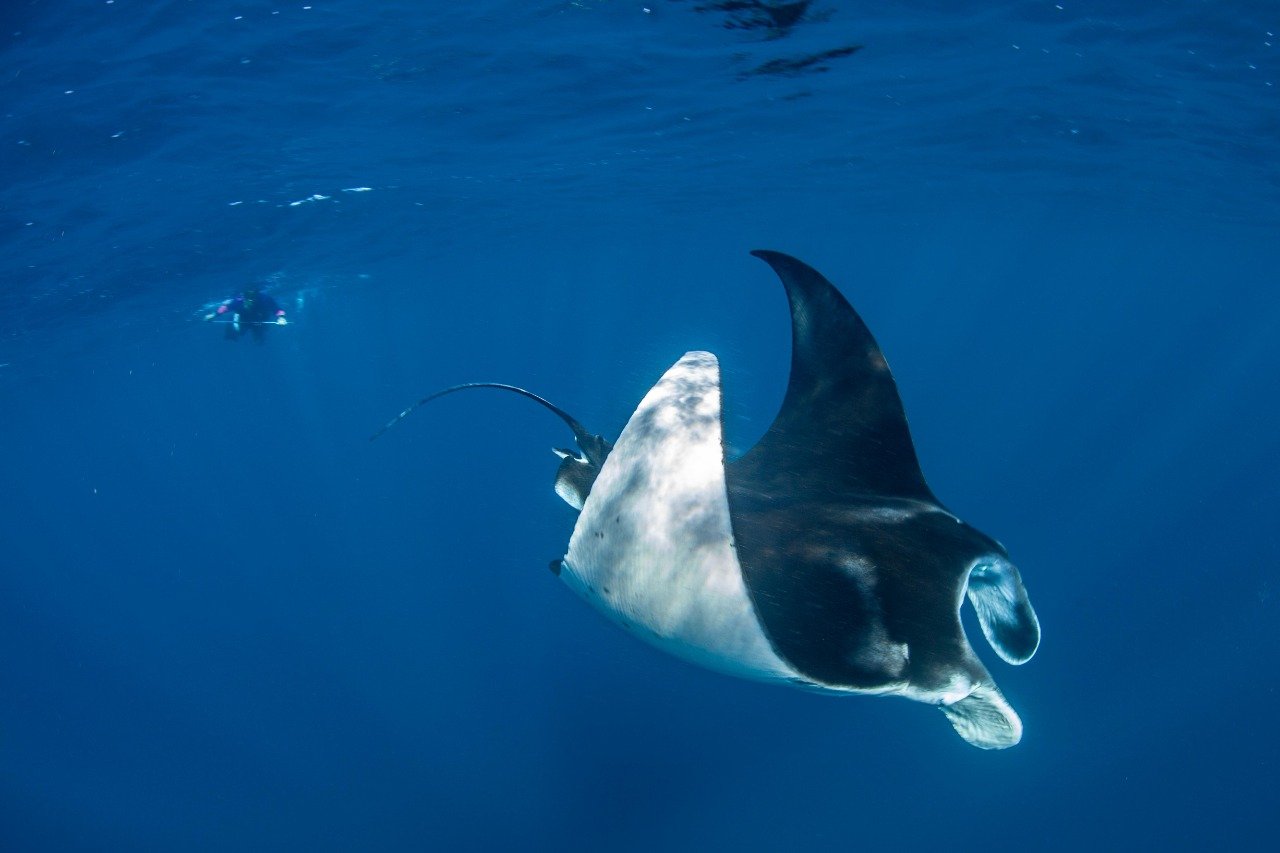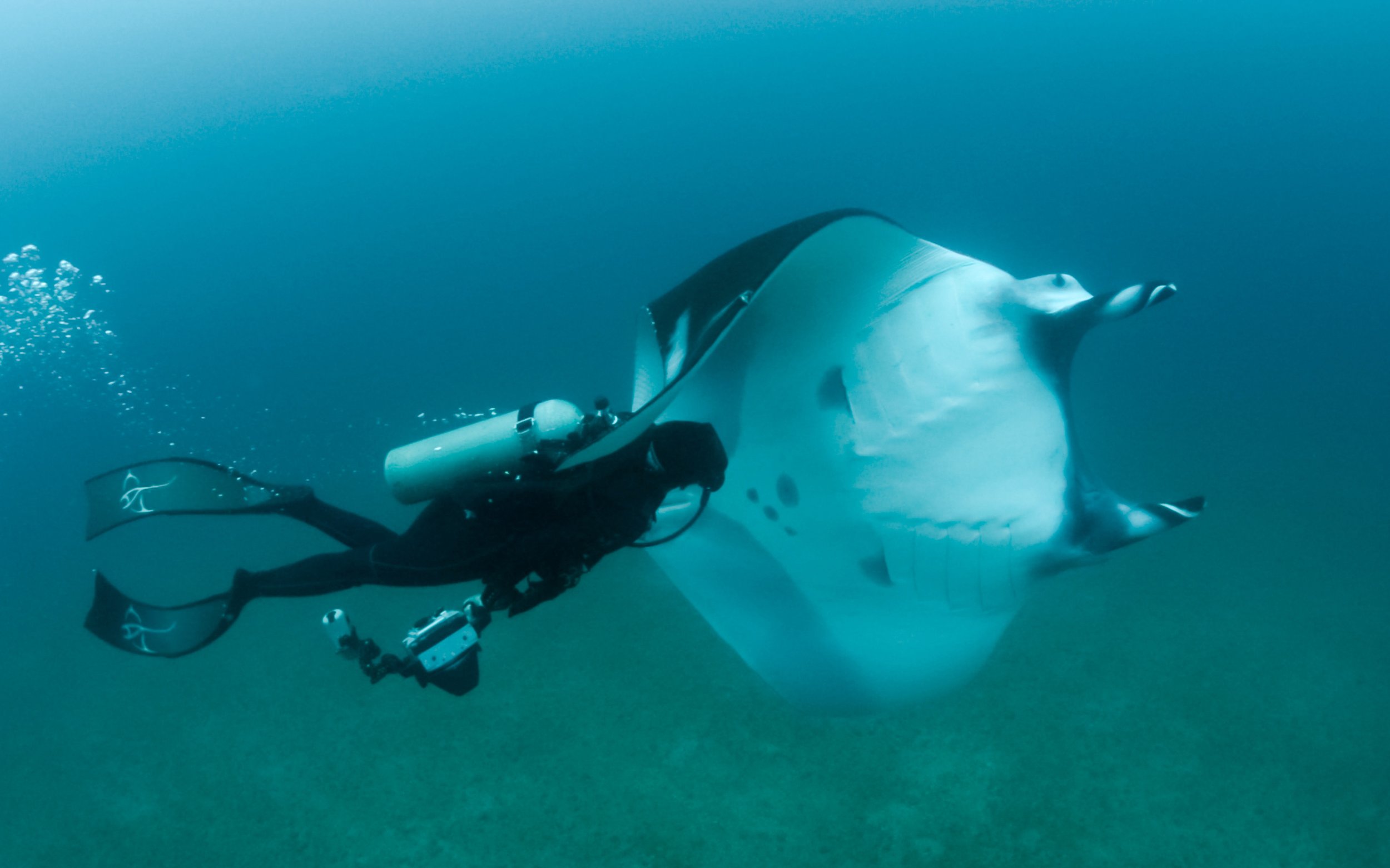Happy World Manta Day! Here are the latest discoveries on manta rays from our global team
MMF first began as the ‘Manta & Whale Shark Research Centre’ in Tofo, Mozambique, where Andrea Marshall completed the world’s first PhD on the ecology of manta rays. Years later, she and the MMF team continue to be world leaders in manta ray research and conservation.
To help celebrate these majestic sea flap-flaps, we’ve compiled some of the latest discoveries on manta rays from our global team.
Mantas in Mozambique
Now in its twentieth year, the Mozambican Manta Project has expanded along the whole Inhambane province. This year, we were excited to publish an important new scientific paper on the manta rays of Zavora, a remarkable area that hosts a significant winter aggregation of reef mantas in the south of Inhambane.
The beautiful Zavora coastline
The Zavora team, headed by Nakia Cullain, also began a telemetry project in the region this year – successfully deploying the first acoustic and satellite tags on reef mantas for Nakia’s PhD project.
Nakia measuring mantas using a laser system
This year we also officially opened offices in Morrungulo and Inhassoro. Morrungulo, in particular, has shown promise as an important manta ray aggregation area, with regular sightings of both reef and giant oceanic manta rays.
Up in Bazaruto, our team deployed the first towed SPOT satellite tags on reef mantas in Mozambique to better understand their northern home range in and around the Bazaruto Archipelago National Park.
Andrea tagging a reef manta in Mozambique
We also deployed our first CATScam tags on reef manta rays (camera tags with an onboard science lab!). We hope this will help us learn more about the habitat use of the species in and around the National Park.
Andrea searching for a floating CATscam
The giant oceanic mantas have eluded us so far in 2022, with five remaining tags to deploy on this species. Once complete, we will publish a multiyear study on the movement patterns and vertical and horizontal habitat use of these giant rays along the southeastern African coastline.
This year, we’ve also continued to create content for our local youth education programs on manta rays, shot for an upcoming Netflix series, and created Virtual Reality experiences with manta rays that are delighting children across the province.
Our team showing young minds the wonders of mantas through ocean VR experiences.
Mantas in South Africa
Earlier in the year, Nakia Cullain headed down the coast to tag the first ever reef manta rays in South Africa.
With the support of Dr. Ryan Daly, Wild Oceans, and Michelle Carpenter, she deployed 12 acoustic tags on reef manta rays within the iSimangaliso Wetland Park (IWP). The team also established a new underwater receiver station at a key site for these mantas, adding to the growing receiver array within the IWP and along the southeast African coast.
In collaboration with ATAP (Acoustic Tracking Array Platform), we plan to track the fine-scale movements of these rays and investigate their habitat use within Marine Protected Areas in the region, and perhaps even up to Mozambique!
This project integrates with Nakia’s current research in Mozambique (above). She hopes to investigate the linkage of manta populations in the region, confirm essential areas for them, and investigate risks they may face.
We also plan to deploy pop-up satellite tags on manta’s in the IWP later this year. The data will show their habitat, MPA use, risk overlap, and transboundary movements.
Mantas in Florida
Now in its seventh year of operation, The Florida Manta Project has had many triumphs in 2022. Our second year of research in Central Florida was very successful, despite challenging fieldwork conditions. We identified 17 manta ray individuals, observed lots of breaching events, collected plankton samples around feeding mantas, and recorded evidence of mating! We also deployed six satellite and acoustic tags that will hopefully shed light on the movement patterns of adult manta rays in Florida.
This season, mantas have been unusually elusive in South Florida. So we were incredibly excited to see a manta named Larry Lee recently – one of our favorite individuals, who we encountered 14 times last year!
Jessica deploys a drone in search of mantas @ Bryant Turffs
Look who we found - it’s Larry Lee!
We also completed a year of plankton sampling across our survey area for our ongoing feeding ecology study, collecting over 200 plankton samples.
We have been staying busy outside of fieldwork as well. We published a paper on how we used drones to assess swimming kinematics of manta ray behaviors, which was the first of its kind. The kinematic data also contributed to our collaborative work with Digital Life 3D and ANGARI Foundation to create the first accurate digital 3D model of a manta ray which you can read all about here! Check out the amazing tech in the video below…
Building upon existing elementary educational resources, we developed additional lesson plans for grades 6-8. Also, we hosted a professional development workshop for teachers. In just half of a school year, we taught over 200 students and countless members of the public about Florida manta rays to raise awareness for our conservation efforts.
Mantas in Indonesia
Building capacity with Indonesian researchers, spreading awareness, and educating the next generation of marine stewards is one of the primary goals of our Indonesian project.
During our field trips, we captured many new manta ray IDs, growing our population to 810 individuals! After much trial and error, we’ve nailed the design and in-water use of a dual video system (below) to measure manta rays from afar. Between March and July 2022, we measured 46 manta ray individuals. We also had the opportunity to deploy two temperature loggers to monitor environmental conditions at two of our study sites.
Measuring mantas using a new stereo-photogrammetry system
Our team squinted through the microscope for our seventh annual Microplastics and Megafauna fieldwork. We were studying plastics and plankton collected through surface-trawling in manta ray feed grounds that, sadly, can look like this:
Manta ray filter feeding through plastic
This year, we doubled down on educational and awareness programs. We trained three additional graduate students on microplastics, tourism, manta rays, and sea turtle research. We conducted tourism surveys and community outreach to local snorkel operators regarding sustainable tourism practices. We also promoted marine conservation to local primary and high school students, facilitated two high school field trips on manta rays and sea turtles, and had two documentaries filmed!
We welcomed two new interns, Nathania and Ramadhon, who we trained in manta ray and sea turtle research. Training included SCUBA diving, photographing mantas, and collecting environmental data (below).
Nathania and Ramadhon also joined Janis to educate the boat captains of manta snorkeling tours in the Nusa Penida Marine Protected Area (MPA) – raising their awareness of proper manta-watching conduct:
At the end of their two-month internship, Nathan and Rama passed on their newfound megafauna knowledge to elementary and middle school children living within the Nusa Penida MPA. We hope a few of these children will grow up to be the next Janis, Rama, or Nathan!
We’re also excited to share that our former intern and research assistants, Aulia and Janis, have started their Master’s studies in Australia and the United States. To top it off, we also published a paper regarding manta ray residency and movement patterns in the Komodo National Park!
Manta Education
Education is this years theme for World Manta Day. Be sure to check out our science lesson plans for elementary and middle school students (grades 3-8).
The Florida Manta Project created these materials in collaboration with educators Hillary Penner and Stacy Assael.


























